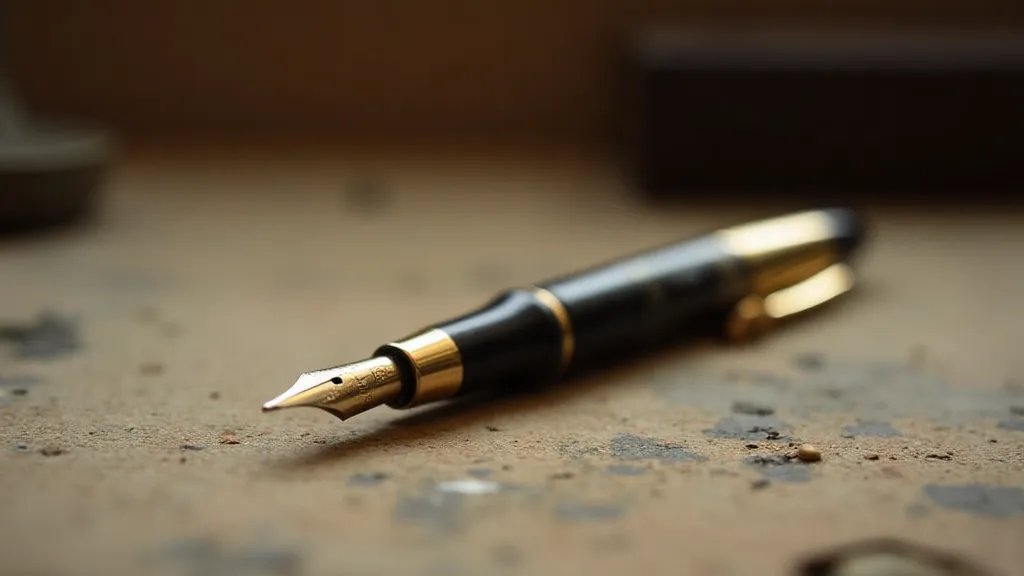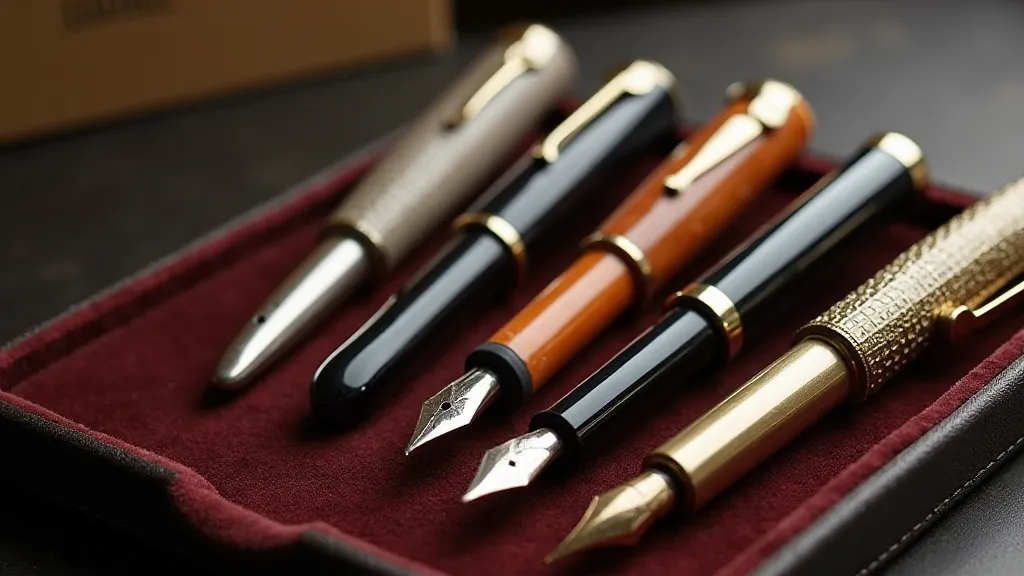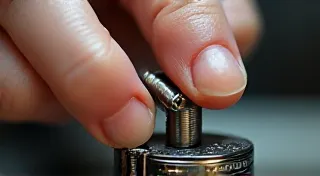The Inkwell's Lament: A Study in Obsolescence and Enduring Craft
The click of a ballpoint, the hum of a printer – these sounds are ubiquitous in the modern world, the soundtrack to instant communication and digital documentation. But what of the quiet scratch of a nib across paper, the subtle weight of a finely crafted pen in hand? These are whispers from a bygone era, echoes of a time when writing wasn't just a function, but an act of considered artistry. The decline of traditional writing instruments, especially fountain pens and other antique pen brands, isn’t merely a technological shift; it’s a lament for a lost connection to craft, to slowing down, and to the beauty inherent in tangible creation.
I remember, as a child, my grandfather’s desk. It wasn't grand, but it was laden with a quiet dignity. Amidst the scattered papers and worn ledgers sat a single, unassuming pen – a Sheaffer Lifetime. It wasn't extravagant, but it felt important. He’s no longer with us, but I still have that pen. It sits on my own desk, a silent testament to a different pace of life, a life where correspondence wasn’t a hurried email but a carefully considered letter penned with deliberate strokes.

A Brief History: From Goose Quills to Golden Nibs
The story of antique pens is a reflection of broader societal shifts. Before the Industrial Revolution, writing was primarily done with quill pens, painstakingly carved from feathers – an arduous and delicate process. The invention of the metal nib, initially crafted from steel, marked a significant leap forward in the 18th century. The 19th century then witnessed an explosion of innovation, with numerous manufacturers vying for dominance. Names like Waterman, Parker, Conway Stewart, and Montblanc emerged, each bringing its own unique approach to design and functionality. These weren't simply tools; they were statements of status, objects of desire. The allure wasn’t merely about possessing an instrument; it was about the legacy and heritage tied to its creation – a heritage that echoes through the styles and techniques employed, impacting even the way individuals shape their own handwriting.
The rise of ballpoint pens in the mid-20th century, championed by Marcel Bich (the "Bic" in Bic pens), delivered convenience and affordability on an unprecedented scale. While undeniably practical, this shift began a slow erosion of the fountain pen’s prominence. Suddenly, a disposable pen was cheaper and easier than investing in a lifetime writing instrument. The artistry, the craftsmanship – it seemed almost irrelevant in a world obsessed with speed and efficiency.
The Craftspeople's Resolve: Preserving a Dying Art
Yet, the story isn't entirely one of decline. While mass production reigns supreme, a dedicated community of artisans continues to uphold the traditions of antique pen craftsmanship. These are not simply manufacturers; they are keepers of a legacy. They painstakingly hand-carve ebonite bodies, meticulously polish gold nibs, and assemble each pen with an unwavering attention to detail. The skills passed down through generations are now practiced by a smaller, more passionate group. Many operate as small, independent workshops, fiercely guarding their methods and resisting the pressures of mass production. Often, the families behind these workshops have built entire careers around penmaking, their techniques and innovations forming a living history of the craft, as explored in A Chronicle of Craft: Tracing the Legacy of Pen Making Families.
Consider Conway Stewart, a British manufacturer with a history stretching back to 1817. Though faced with numerous challenges and temporary closures, the brand has been resurrected and continues to produce exquisite writing instruments, often employing traditional techniques. Similarly, brands like Wahl-Evans and Namiki continue to carry the torch, embracing both innovation and respect for the past. These are not companies seeking to dominate the market; they are driven by a deep commitment to preserving a piece of history.
Exploring Specific Antique Pen Brands: A Collector’s Glimpse
The world of antique pens is vast and fascinating. Let's briefly examine a few notable brands:
- Waterman: Known for its elegant designs and innovative filling systems, Waterman pens from the late 20th and early 21st centuries are highly sought after. The "Ideal" models, particularly, are iconic.
- Parker: From the "Lucky Curve" models to the more sophisticated Duofold series, Parker has a long and storied history. The early Parker pens, characterized by their distinctive clip design, are instantly recognizable.
- Sheaffer: The "Lifetime" series, introduced in 1924, established Sheaffer as a major player in the luxury pen market. The distinctive clip design and the consistent quality made these pens enduringly popular.
- Montblanc: Though relatively “younger” compared to Waterman or Parker, Montblanc quickly established itself as a symbol of luxury and prestige. The "Meisterstück" (Masterpiece) series remains the brand’s most iconic offering.
- Conway Stewart: As mentioned earlier, Conway Stewart’s commitment to traditional British craftsmanship is admirable. Their pens often feature distinctive patterns and details.

Collecting & Restoration: A Path to Appreciation
Collecting antique pens isn’t merely about acquiring objects; it's about connecting with history, appreciating craftsmanship, and understanding the evolution of design. The allure lies in uncovering hidden gems – a forgotten Waterman "Ideal" in a dusty antique shop, a beautifully restored Conway Stewart with a captivating story to tell. The passion of collectors often leads them to delve into the archives and collections amassed over decades, offering glimpses into a world of meticulous curation, as described in The Curator’s Whisper: Unearthing Stories from Archived Pen Collections.
Restoration can be a rewarding pursuit, but it’s crucial to approach it with respect and caution. Cleaning a pen's body may involve gentle soaking in warm water and mild soap. Nib restoration, however, is a more delicate process, often requiring specialized tools and a thorough understanding of nib geometry. It's often advisable to seek the expertise of a professional restorer for complex repairs.
The Enduring Appeal: More Than Just a Tool
In a world dominated by digital communication, the act of writing with an antique pen offers a welcome respite – a moment of quiet contemplation and deliberate expression. The weight of the pen in hand, the subtle scratch of the nib on paper – these are sensory experiences that transcend mere functionality. The beauty lies not only in the pen’s aesthetic appeal but also in the tangible connection it provides to the past. It’s a reminder that slowing down, taking the time to create something beautiful, is a value worth preserving. The inkwell's lament isn't a cry of despair, but a gentle urging – a reminder to appreciate the enduring legacy of craftsmanship and the simple elegance of a well-written letter. For those captivated by the history and stories intertwined with these objects, the connection can be profoundly resonant, evoking a sense of nostalgia and personal connection, as explored in The Collector's Resonance: Why Antique Pens Evoke Nostalgia & Connection.





